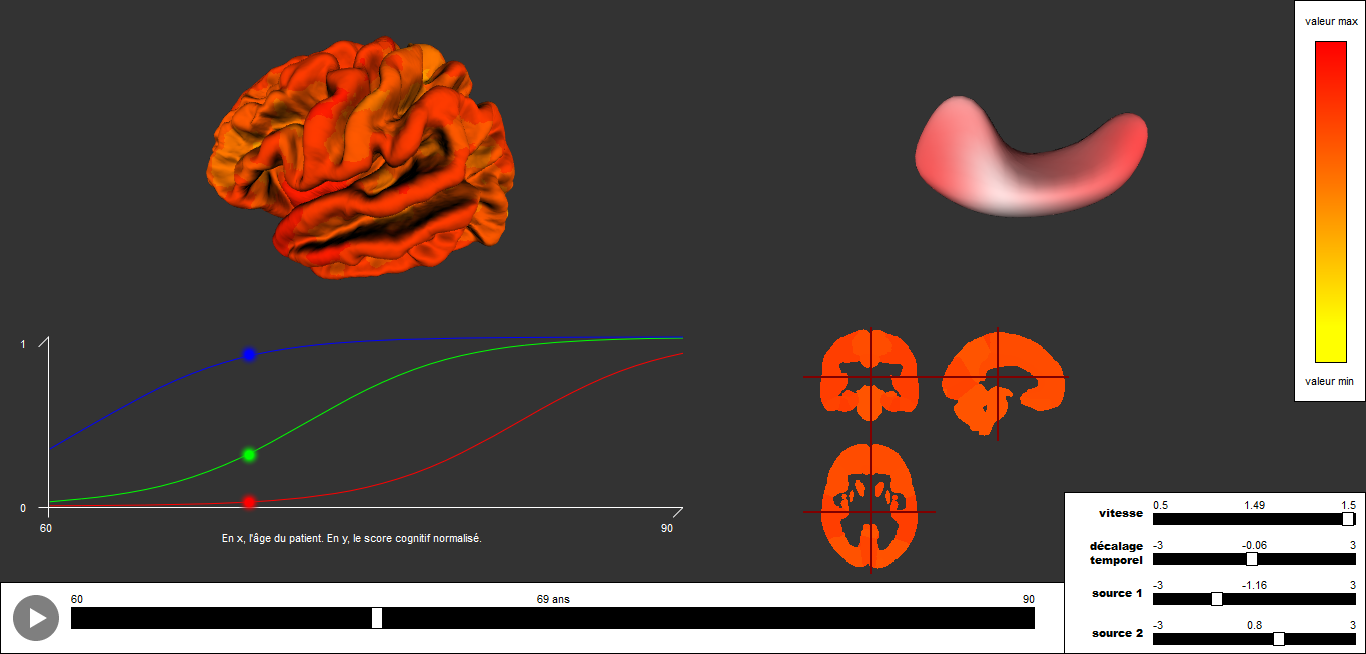We have developed a new generation of statistical learning (Artificial Intelligence) methods to artificially reproduce the effect of Alzheimer’s disease on the brain and cognitive abilities. To build these models, our computer programs analyzed imaging data (Magnetic Resonance Images and Positron Emission Tomography) and neuro-psychological assessments from several hundreds of subjects observed at multiple time-points during the disease course.
Not only do these numerical models show you the typical effects of the disease on the brain, but also, for the first time, how the disease manifests itself differently in different individuals.
These numerical models allow us to better understand the disease, identify the factors that can influence its development, and why not, tomorrow, be able to anticipate the onset of symptoms or even prevent the onset of the disease.
Interactive model of disease progression
Click on the image for an interactive 3D view of a digital model of Alzheimer’s Disease progression (careful: may not work on mobile device, use Chrome or Firefox browsers preferentially, may take up to one minute to download the app!!):
Simulation of virtual cohorts at a large scale
The developed models of digital brain allow to simulate virtual patients that reproduce the disease evolution present in the original cohort. This first attempt to reproduce and enhance the signal present in the ADNI cohort offers:
- The cognitive assessments of 1 million subjects (5M+ visits) – download
- The cortical thickness (decimated to 3658 ROI) of 100.000 subjects (500k+ visits) – download 1, download 2, download 3, download 4 and download 5
- The shape of the left hippocampus of 1 million subjects (5+ visits)
- The shape of the right hippocampus of 1 million subjects (5+ visits)
- The glucose metabolism (SUVr) projected on the AAL2 atlas of 1 million subjects (5M+ visits) – download
We also provide a python 3.7 script to map the 3658 cortical thickness ROI to the FSAverage representation (+360k nodes) directly as a MGH file (to be read with Freeview)

